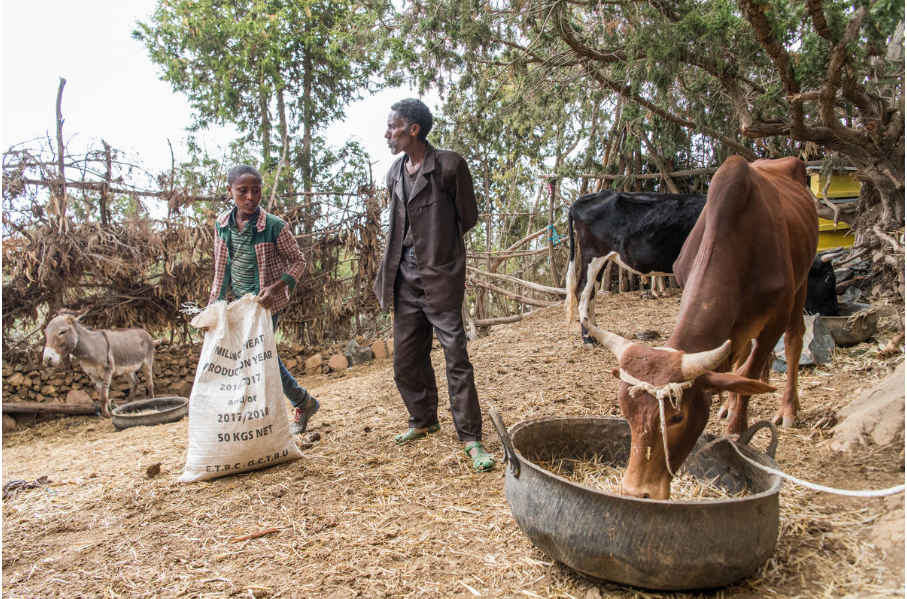Exemplar countries achieved significant reductions in U5M during the case study period, but several broad challenges pose ongoing barriers to sustainability and equity in these countries. Eight common challenges are discussed in this section.
Neonatal Mortality
While the neonatal mortality rate (NMR) declined in all Exemplar nations, this improvement lagged behind overall progress against U5M.
As a result, neonatal disorders (diseases and conditions affecting infants during the first month of life) accounted for the greatest proportion of U5M at the end of the study period in all countries except Rwanda – where they accounted for the same proportion of deaths as lower respiratory infections.
Quality Improvement and Sustainment
Quality of care, both in terms of the patient’s experience and in terms of normative technical guidelines, remained a significant challenge to U5M reduction efforts. Exemplar countries initially focused more on access and coverage than on ensuring and sustaining quality.
Governments used several strategies to address the sustainability of quality of care – including a focus on training and workforce supervision, provision of national standards, and incentives such as performance-based financing. The strategies met with variable success, however, and some had not been fully implemented by the end of the study period.
Sufficiency and Distribution of Health Care Providers
Maintaining and increasing the number of doctors, nurses, birth attendants, and other skilled health workers was an ongoing challenge in the Exemplar countries.
These countries suffered from significant disparities in facility staffing between urban and rural areas and across regions. They tried to reduce this inequity by incentivizing or mandating health care workers from cities to serve in rural or underserved areas. Another tactic was targeting students from these areas for training, with the hope they would be more likely to return to their communities.
Health Care Delivery Infrastructure System Strength: Supply Chains and Other Systems
Although Exemplar countries made progress in developing critical supply chains, health care delivery systems continued to present challenges. Countries experienced stockouts of vital vaccines and shortages of diagnostic and treatment supplies, posing a threat to the ability of facilities to provide services. Despite work to expand facilities and improve equipment, Exemplar countries encountered gaps in their readiness to provide care, especially in remote areas.
Uncertain Funding
The total amount of government funding for health increased in five of the six Exemplar countries, but government spending as a percentage of total health expenditures (which includes development assistance for health, pre-paid private, and out-of-pocket spending) dropped or remained the same overall – despite improvements in the countries’ economic circumstances.
Insufficient government budgets have led to an overreliance on donor funding, which threatens the sustainability of evidence-based interventions. Although donor funding ensured the short-term feasibility of much of this work, the inherent unpredictability of such funding has implications for longer-term sustainability.
Equity Concerns
While all Exemplar countries experienced economic improvement as measured by increases in GDP per capita, there were still high rates of poverty in all countries – and lingering wealth imbalances among subnational regions, as well as between urban and rural areas.
As to gender equity, the economic and social status of women generally improved in the Exemplar countries during the study period, resulting in heightened access to care for mothers and children. However, female literacy rates and other indicators of female empowerment remained low at national and subnational levels.
These persistent inequities are a continuing barrier to progress in U5M reduction efforts among the most vulnerable populations.

Population Shifts: Urbanization, Internal Displacement, and Refugee Crises
An ongoing challenge in Exemplar countries is the explosive growth of urban populations, especially in informal settlements where access to health care is often limited.
Changing urban demographics and growing equity gaps within cities will present challenges in adapting health systems to ensure access to care for these populations.
Furthermore, internal displacements and influxes of foreign refugees sometimes hindered the delivery and efficacy of interventions, including through the reintroduction of diseases.
Evolving Nature of U5M: Increasingly Complex and Treatment-Resistant Causes of Death
An additional challenge in reducing under-five mortality was the changing profile of U5M itself. As some common causes of non-neonatal mortality were declining, other causes began accounting for a larger share of deaths.
In all Exemplar countries, deaths due to traffic accidents either increased (for example, in Rwanda, Senegal, Bangladesh, Peru, and Nepal) or stayed the same (as in Ethiopia) as a proportion of U5M. Drowning is such a common cause of childhood mortality in Bangladesh that health officials included it in the IMCI protocol, which typically focuses on communicable diseases.
Conclusion
Overall, these challenges pose barriers to continued reduction of under-five mortality in Exemplar countries. Nevertheless, the lessons from the Exemplars' success can be shared across countries, to help them overcome the challenges of the future and continue the momentum of progress that has been achieved.
